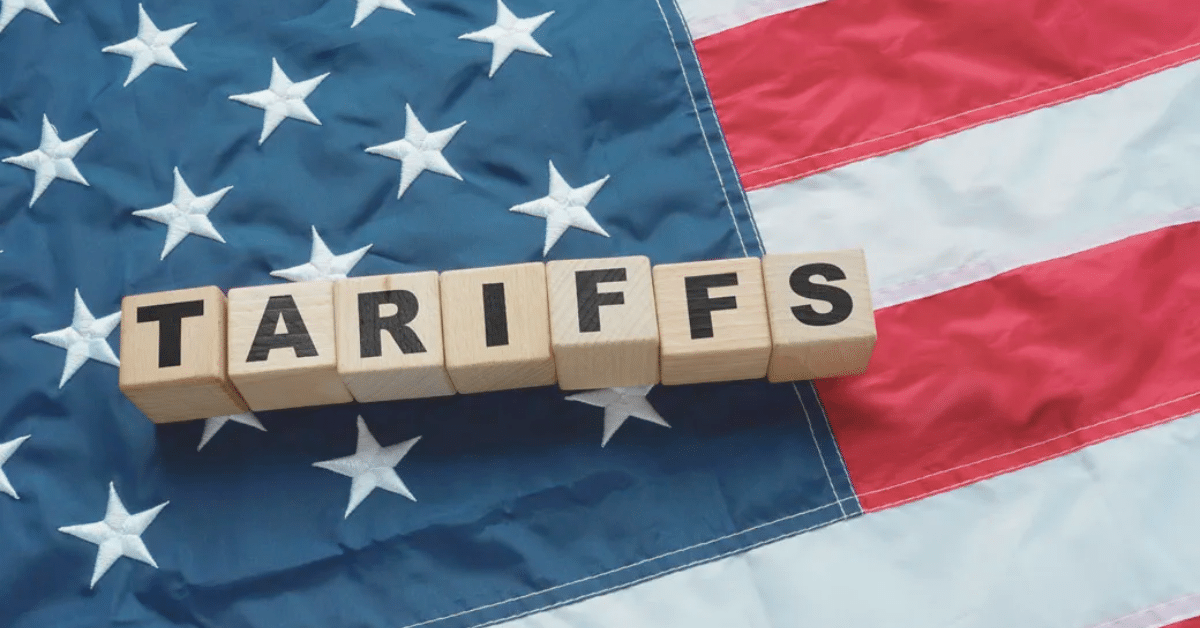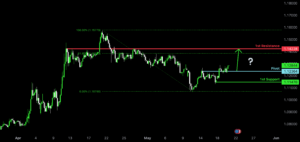The introduction of tariffs could negatively impact the crypto market in the short term, but analysts believe the long-term effect could be somewhat positive.
Crypto traders seem to have adopted a “wait-and-see” mode, putting the market in limbo as they await US President Donald Trump’s “Liberation Day” tariffs, which are set to roll out later this week. Bitcoin’s price held out around $83,000 late Monday and most of Tuesday, with analysts predicting a 50-50 shot that could see BRC rebound or dive further.
According to The Block’s Bitcoin price page, the flagship cryptocurrency was up 1.8% on Tuesday and Wednesday, while ETH gained at least 1.74% as it traded at $1,837. Similarly, market data indicates that the other leading altcoins made little gains Monday and Tuesday, with XRP leading at 0.42% to trade at $2.11 and Solana surging a paltry 0.2% to trade at $124.4. DOGE and ADA also rose slightly.
Several analysts have weighed in on the cryptocurrency market’s state and believe the anticipated rollout of tariffs has everything to do with the current state of affairs. According to Presto Research Analyst Min Jung, the market is in “wait-and-see mode, as the details of the tariffs have yet to be disclosed.” Also commenting was crypto analyst and founder of crypto educational outlet The Coin Bureau, Nick Puckrin, who wrote:
“As Liberation Day approaches, the uncertainty around the magnitude of the tariffs is keeping bitcoin and other risk assets in limbo.”
According to Puckrin, while Bitcoin had closed its latest CME gap and opened the week around the $83K and $84K level, the existing gap represents an apparent price disparity, with BTC trading below its 200-day average as 24-hour liquidations remain low under $250 million. The analyst believes the state of affairs indicates a momentum that could easily slide downwards. Pucrin further stated:
“Until there is more clarity around tariffs, this range bound pattern will continue […] but if we get softer news than feared or some sort of concessions, we could see a breakout from the current trading pattern.”
If everything happened according to Puckrin’s prediction, $88K would be the price to watch for Bitcoin, but that would depend on an increase in sales volumes to indicate the extension of a rally. Conversely, a tariff shock on the highly anticipated “Liberation Day” could create a bearish momentum that could see BTC slide lower to $79K or even $73K of extreme fear gripping the market. Puckrin stated:
“We could go either way, showing just how uncertain the current macro backdrop is.”
According to a recent CNN report, US President Donald Trump will be announcing several “massive tariffs” beginning Wednesday, in what has been referred to as “Liberation Day.” It is widely expected that Trump’s announcement of reciprocal tariffs for US trade partners could create a chain reaction that could easily trigger a trade war. Presto Research Analyst Min Jung stated:
“There’s a mix of sentiment — some investors believe the impact may be less severe than initially feared, viewing the recent dip as a potential ‘buy the dip’ opportunity […] however, many traders are still opting to remain on the sidelines until there’s greater clarity. The market’s next move will largely hinge on the tone and substance of the actual announcement.”
According to James Butterfill, the head of research at Coinshares, tariffs would negatively affect the crypto market in the short term. Butterfill said last February, “Unlike gold, bitcoin has a growth component, meaning it reacts to economic trends and liquidity cycles.” The expert opined that tariffs could slow economic growth, reducing demand for risk assets like bitcoin and causing inflation that could lead to speculation on higher interest rates. Tariffs could also cause a temporary price drop, as crypto often correlates with stock markets.
Since tariffs could slow economic growth, they would reduce the demand for risk assets like bitcoin. Inflation would also increase, leading to speculation on higher interest rates.
Revenue is lower dynamically, reflecting the negative effect tariffs have on US economic output, which reduces incomes and resulting tax revenues.
Cryptocurrency prices are mainly affected by company news, economic conditions, network factors, and other aspects unique to crypto that help drive price swings. Understanding crypto price movements is crucial before considering investing.



